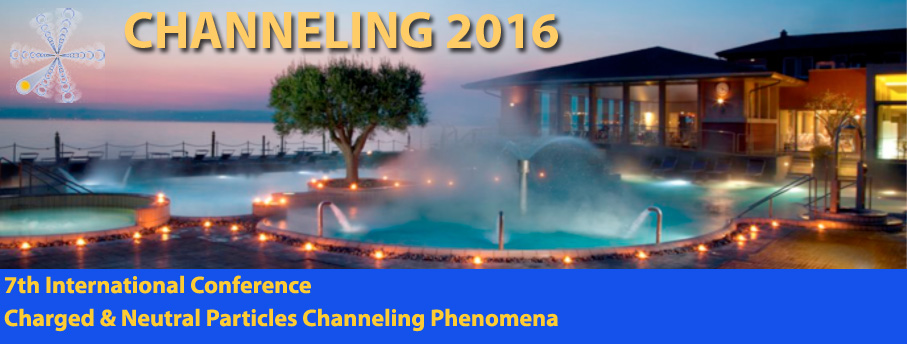Speaker
Alexei Sytov
(FE)
Description
Relativistic particle interaction with oriented crystals combines both classical and quantum features. Coherent particle scattering is described by the average (Lindhard) potential of planes and strings while quantum treatment is necessary to describe the incoherent scattering by both electrons and atomic cores. The latter has to be separated into large-angle single and small-angle multiple scattering with taking into consideration their suppression by collision correlations.
Both classical and quantum features can be naturally combined using Monte Carlo method we have been developing for thirty years. The effect of electron rechanneling, multiple volume reflection in one crystal, crystal surface miscut influence on the high energy beam collimation process, channeling efficiency increase by crustal cut or buried amorphous layer, both planar channeling and quasichanneling oscillations in the deflection angle distribution in agreement with a number of experiments.
The particle motion simulation method has been supplemented by the radiation and pair production simulation by the Baier-Katkov semi-classical method and successfully applied to simulate the e± synchrotron-like radiation, accompanying radiative cooling, self- polarization and anomalous magnetic moment modification, the e- radiation under the multiple volume reflection in one crystal, synchrotron-like e+e- pair production and accompanying dichroism, birefringence, transversely polarized e± production, e+ circular radiation in straight and bent crystals, e± radiation in crystal undulators.
Though many groups have recently adopted the single scattering process, to make the correct simulation of the incoherent scattering more available, we have started to systematically implement this and other essential features into the CRYSTAL code. The algorithms of the latter possess high functionality providing a possibility of varying of initial parameters for optimization problem as well as plenty of different crystal axes and planes for different elements. Additionally, our simulation codes were adopted for high performance calculation using MPI at a multi-core machine and applied at CINECA supercomputers Fermi, Galileo and Marconi. We acknowledge the CINECA award under the ISCRA initiative for the availability of high performance computing resources and support.
Primary author
Prof.
Victor Tikhomirov
(Research Institute for Nuclear Problems)
Co-author
Alexei Sytov
(FE)

